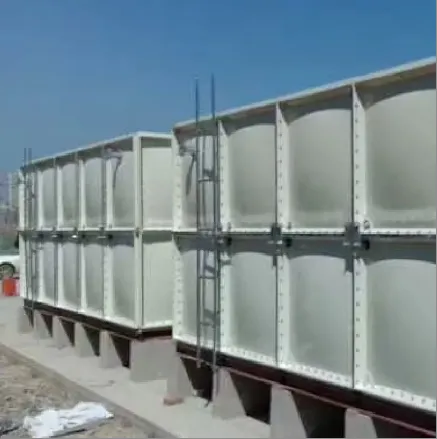loading...
- No. 9, Xingyuan South Street, Dongwaihuan Road, Zaoqiang County, Hengshui, Hebei, China
- admin@zjcomposites.com
- +86 15097380338
- Welcome to visit our website!
fiberglass walkway grating
The Benefits of Fiberglass Walkway Grating
In the realm of industrial construction and infrastructure, safety and durability are of paramount importance. As businesses seek materials that not only provide strength but also enhance safety features, fiberglass walkway grating has emerged as a popular choice. This innovative product offers numerous advantages over traditional materials like wood and steel, making it an ideal solution for various applications, from industrial plants to commercial buildings.
What is Fiberglass Walkway Grating?
Fiberglass walkway grating is crafted from a combination of fiberglass reinforcement and resin. This composite material is designed to be lightweight yet incredibly strong, allowing it to support significant loads while being easy to transport and install. Available in various configurations, it features interlocking designs that create a slip-resistant walking surface.
Key Advantages
1. Corrosion Resistance One of the standout features of fiberglass walkway grating is its resistance to corrosion. Unlike steel, which can rust when exposed to moisture and chemicals, fiberglass remains intact and functional in harsh environments. This makes it a suitable option for chemical plants, wastewater treatment facilities, and offshore installations where exposure to corrosive substances is common.
2. Lightweight and Easy to Install The lightweight nature of fiberglass grating simplifies handling and installation. Compared to traditional materials, which can be heavy and cumbersome, fiberglass can be maneuvered easily, reducing labor costs and installation time. Workers can manage larger panels with fewer tools, helping projects stay on schedule.
fiberglass walkway grating

3. Slip Resistance Safety is a critical concern in industrial settings. Fiberglass walkway grating typically features a textured surface that maximizes traction, thereby minimizing the risk of slips and falls. This is particularly important in wet or oily environments where traditional materials would present a danger.
4. Longevity and Cost-Effectiveness While the initial investment in fiberglass grating may be higher than that for other materials, its long lifespan and low maintenance requirements ultimately lead to cost savings. Fiberglass does not require regular treatments, paint, or sealing, unlike wood, which can rot and splinter, or steel, which requires corrosion protection.
5. Versatility Fiberglass walkway grating finds its applications across many sectors. From bridge walkways and industrial platforms to public parks and recreational areas, its versatility knows no bounds. It can be customized in various sizes, colors, and loading capacities to meet the specific needs of any project.
6. Environmental Considerations As industries move towards more sustainable practices, the use of fiberglass grating presents an eco-friendly option. These products can often be manufactured using recycled materials and are themselves recyclable at the end of their lifecycle. This sustainable choice resonates well with companies looking to minimize their environmental footprint.
Conclusion
As industries continue to navigate the challenges of safety, durability, and environmental responsibility, fiberglass walkway grating stands out as a superior choice for many applications. Its corrosion resistance, lightweight nature, slip-resistant design, and longevity make it an ideal material for a wide range of environments. Investing in this advanced material not only enhances the safety and functionality of a facility but also reflects a commitment to innovative solutions in construction. Whether for new builds or renovations, incorporating fiberglass walkway grating is a smart and forward-thinking decision that can yield excellent long-term benefits. With a combination of performance and practicality, it's no wonder that fiberglass grating is becoming the preferred choice for construction professionals around the globe.
-
GRP Structures: The Future of Lightweight, High-Performance EngineeringNewsJun.20,2025
-
FRP Water Tank: High-Performance Storage for Corrosive and Clean Water SystemsNewsJun.20,2025
-
FRP Square Tube: The New Industry Standard for Chemical and Structural ApplicationsNewsJun.20,2025
-
FRP Pultruded Profiles: The Ultimate Choice for Lightweight Structural StrengthNewsJun.20,2025
-
FRP Handrails: The Safer, Smarter, and Stronger Choice for Modern InfrastructureNewsJun.20,2025
-
FRP Grating: The Smart Solution for Durable, Lightweight Industrial FlooringNewsJun.20,2025
-
Why Choose a Galvanized Water Tank for Your Storage NeedsNewsMay.21,2025
